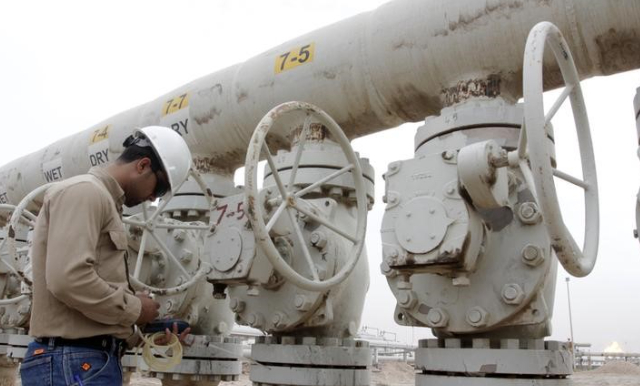
Recently, international oil prices have shown a slight upward trend, with both Brent crude oil and West Texas Intermediate (WTI) futures prices climbing. Behind this fluctuation, the market generally focuses on US President Trump's latest statement on Russia and the complex game between geopolitics and the energy supply chain. Against the backdrop of fragile global economic recovery and accelerated energy transformation, investors' cautious sentiment and sensitive response to policy trends are profoundly affecting the short-term trend and long-term expectations of oil prices.
The direct cause of the recent rise in oil prices stems from multiple uncertainties in the global oil supply chain. The conflict in Ukraine continues to cause market concerns about Russia's energy exports. Ukrainian drones attacked Russian oil pumping stations, resulting in a 30%-40% reduction in Kazakhstan's crude oil export flow and a daily oil supply interruption of about 380,000 barrels. In addition, cold weather in the United States poses a threat to shale oil production, and North Dakota's daily output may fall by 150,000 barrels. These events have jointly exacerbated market expectations of a tightening of crude oil supply, pushing oil prices to stabilize at a key psychological level. Analysts believe that the combined effect of geopolitical conflicts and extreme climates makes oil price fluctuations more sensitive.
Trump's tough stance and diplomatic moves against Russia have become the core variables that investors are closely watching. In his campaign, he emphasized a "tougher stance" against Russia and claimed that he had found an energy solution to replace Russia for Europe. This statement may imply that the United States will increase sanctions and restrict Russian energy exports. However, the market is also worried that Trump may promote the settlement of the Russian-Ukrainian conflict through diplomatic mediation, thereby lifting sanctions and easing supply pressure. Even if a peace agreement is reached, it will take time for Russia's oil exports to resume, and short-term oil price fluctuations depend more on the market's rapid response to policy expectations. In addition, Trump's threat to impose tariffs on many countries may weaken global economic vitality, indirectly affect oil demand, and form a double pressure on oil prices.
Investors have different interpretations of Trump's statement. Optimists expect that if the conflict eases, Russian oil will return to the market to stabilize prices; pessimists worry that escalating sanctions or tariff policies will trigger global economic turmoil, further pushing up oil prices. Speculative funds have significantly reduced their net long positions in WTI, showing cautious sentiment. At the same time, OPEC+'s production increase plan, the risk resistance of US shale oil production, and the production adjustments of Middle Eastern countries under high oil prices have all become bargaining chips for market games. Short-term speculative behavior and dynamic changes in policy expectations have led to frequent fluctuations in oil prices within a narrow range.
In addition to short-term fluctuations, the long-term logic of energy transformation cannot be ignored. Countries are accelerating the layout of new energy and reducing traditional oil investment, which objectively leads to insufficient supply elasticity. Although high oil prices themselves promote the improvement of the economic efficiency of new energy, they still need to rely on stable oil supply in the short term. In addition, the impact of climate change on energy production, the uneven global economic recovery, and the normalization of geopolitical conflicts have jointly constructed the structural basis for oil price fluctuations. The market needs to balance short-term speculation with long-term trends and be wary of the risks brought about by sudden policy changes.
The current rise in oil prices shows typical "geopolitical drive + amplified supply and demand contradictions" characteristics. Investors should be wary of potential variables in Trump's policy statements and pay close attention to the progress of Russia-Ukraine negotiations, adjustments to US energy policies, and the impact of global climate on the supply chain. Short-term operations should be cautious and avoid chasing high prices; long-term layout should focus on the structural opportunities brought by energy transformation. It is recommended to hedge risks through diversified investment, while tracking key indicators such as OPEC+ production decisions and US shale oil production capacity recovery to grasp the pulse of the market.
Against the backdrop of increasing fragility in the global energy market, the stability of oil prices ultimately depends on the cooperation of the international community. Only by balancing supply and demand, resolving geopolitical conflicts, and promoting green transformation can the negative impact of sharp price fluctuations on the economy be avoided.

Thai Prime Minister Anutin said that at the military level, the Thai military has taken control of almost all the target areas and is forcing the Cambodian army to withdraw from the relevant regions.
Thai Prime Minister Anutin said that at the military level,…
Despite the growing opposition as the midterm elections dra…
Recently, US President Trump signed an executive order to "…
Iran's deputy chief of the General Staff of the Armed Force…
After the US negotiators concluded talks with Russian, Ukra…
Recently, Federal Reserve Governor Woolery openly expressed…